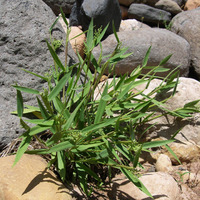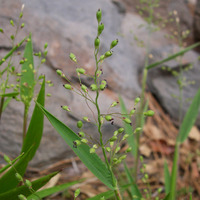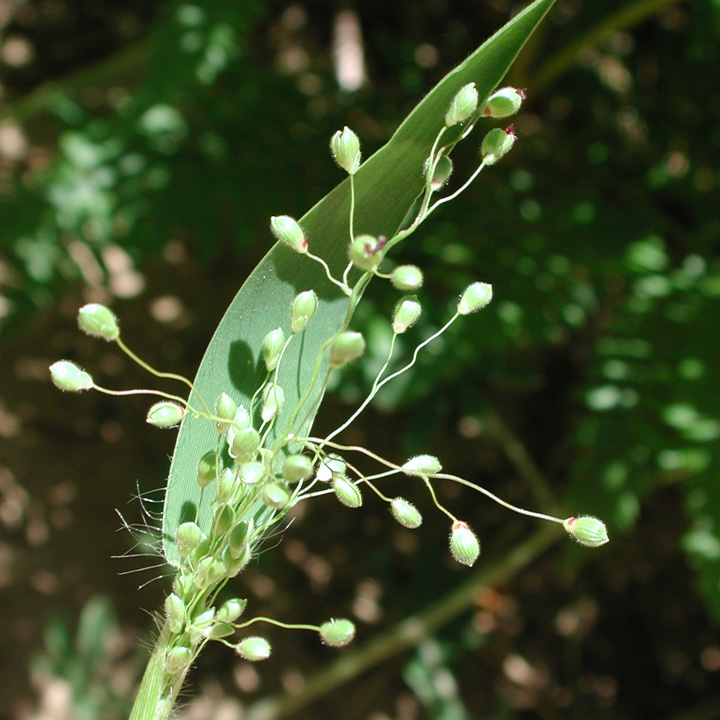|
|
 Leaves Max Licher @http://swbiodiversity.org, Usage Rights: Creative Commons Attribution-ShareAlike (CC BY-SA) |  Seedhead Max Licher @http://swbiodiversity.org, Usage Rights: Creative Commons Attribution-ShareAlike (CC BY-SA) |  Seedhead Max Licher @http://swbiodiversity.org, Usage Rights: Creative Commons Attribution-ShareAlike (CC BY-SA) | | | |
|
| | |
Origin: Native Season: Cool and Warm
Habitat Description: Found in dry open oak or pine woodlands; often in sandy to clay soils.
Plant Communities:Interior Chaparral, Semidesert Grasslands, Pinyon Juniper Woodland, Montane Conifer Forest
Elevation: 4000 - 7000 feet
Similar Species: Dichanthelium oligosanthes var. scribnerianum
Desc:
This grass develops a stem during the spring that becomes 1 to 2 feet tall by early summer. This ascending to erect stem is unbranched, or may have 1 to 2 short side branches. There are 4 to 6 alternate leaves along each stem.
Identification Notes: Tufted perennial. Spikelets 2.5 to 4.3 mm long, usually obovoid, turgid; upper glumes usually with an orange or purple spot at the base, the veins prominent, glumes hairy.
Grass Type: Perennial bunchgrass Rhizomes: N Stolons: N
Large Dense Clump (> 2 feet): N Bushy (highly branched): N
Height with Seedheads: 12 to 24 inches
Seedhead Structure: Branched - open and spreading Seedhead Droops: N
Flowering Period: Apr - Nov
Number of Flowers per Spikelet: Multi-flowered Spikelets One-sided: N
Awns: Absent Three Awns: N Awns Bent: N
Flower and Seedhead Notes: Primary seedheads are briefly open-pollinated, then self-pollinated from late May to early June. The smaller secondary seedheads, produced from June to November, are also self-pollinated. Spikelets are green to reddish-green and covered with fine hairs.
Blade Hairy:
Y
Blade with White Margins:
N
Blade Cross section:
Flat
Blade Notes:
Leaves are dull green, flat, and hairy along their lower margins. The upper blade surface is hairless. Leaf sheaths are green, purplish green, or purple; they are strongly veined and more or less covered with long spreading hairs.
Sheath Hairy:
Y
Tuft of Hairs at top of Sheath or Collar:
Y
Ligules:
Hairy
Auricles (Ear-like lobes at collar area:
N
Forage Value:
Provides green forage for livestock and wildlife during the winter and birds eat the seeds. Provides nesting materials for native bees.
|
|